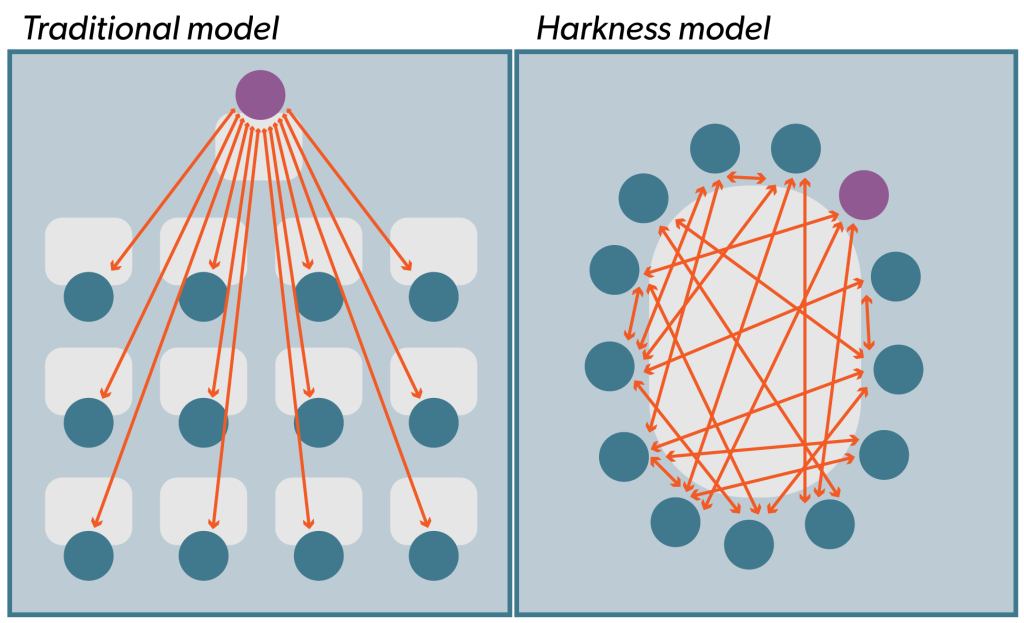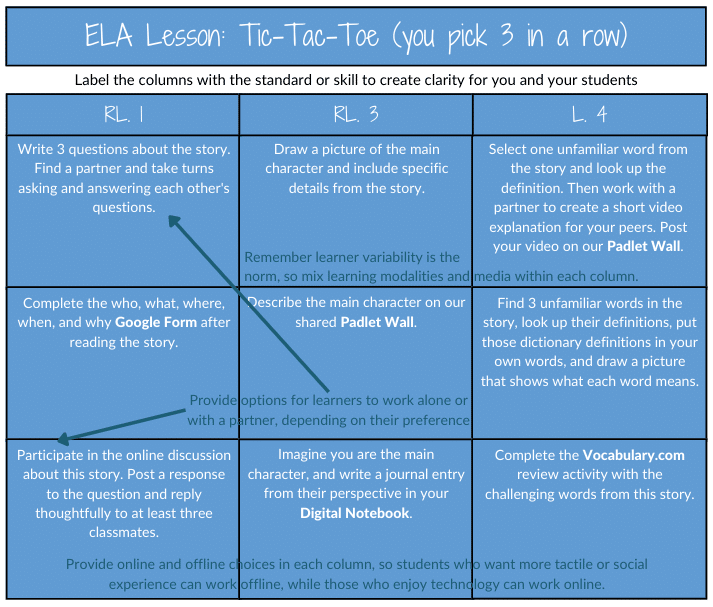A recent Edutopia article entitled, "Bringing the Harkness Method to Math Class" asks,
This often means that the teacher is doing most of the work. John Hattie has done research that shows most teacher speak for 60-70% of a class period, and this leaves little time for students to ask questions or work out their own ideas.Who is doing the majority of the talking in your math classroom? In a traditional secondary math classroom, the teacher is stationed at the front of the room demonstrating examples related to the topic of the day, as illustrated in the traditional model seen below.
Since the people doing the work are doing the learning, this means it is more important than ever to find ways to shift the work to our learners. Katie Novak, UDL expert and co-author of The Shift to Student Led unpacks the research on motivation, which shows that models with the teacher at the center create a self-fulfilling prophecy: students who are overly reliant on the teacher to drive instruction aren't motivated to own their learning. She then goes on to suggest three shifts that can help shift the responsibility and motivation for "transfer of information" to student discovery:
1. The Choice Board
Catlin Tucker (co-author of The Shift to Student Led), explains the benefits of choice boards:
- Choice is a powerful motivator.
- Learner variability means that not all students enjoy the same task.
- Students have more control over the pace at which they navigate the tasks.
- Teachers are freed from orchestrating a lesson and able to conference with learners about their progress, provide feedback on work in progress, or conduct side-by-side assessments.
While these are often associated with projects, choice boards can be used daily with very little prep from the teacher, such as this example for planning activities based upon the unit standards.
2. Leverage Reciprocal Teaching and Jigsaw Activities
Reciprocal teaching, a cooperative learning strategy that improves comprehension, has long shown benefits to learners. The benefits include:
- It encourages students to think about their own thought process during reading (metacognition).
- It helps students learn to be actively involved and monitor their comprehension as they read.
- It teaches students to ask questions during reading and helps make the text more comprehensible.
- It can be adapted for different content areas.
Likewise, the jigsaw method (and it's adaptations) has shown benefits for learning and motivation, making students depend upon each other for new learning.
3. Make Direct Instruction Differentiated and Bite-Sized
Leveraging small group instruction can provide more time and opportunity for learners to lead, while still allowing the teacher time to give students what they need. Catlin Tucker also recently wrote about how to leverage AI to support station rotations and other student-centered lesson designs, which allow for in-person small groups OR video-based instruction.
Just the Beginning
In closing, there are so many ways to shift to more student-centered learning opportunities. As Crystal Frommert says in her Edutopia article:
Consider ways that you can promote discussion and collaborative learning among your students. How can you, as the teacher, step back from the “sage on the stage” lecture model? It doesn’t have to be an overnight shift; even small changes will promote student voice, equity, and deeper thinking.


No comments:
Post a Comment
Have something to ask or add? Let us know! We have moderation turned on (just in case), but we will be sure to approve new comments each week day.